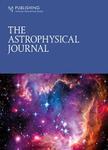版权所有:内蒙古大学图书馆 技术提供:维普资讯• 智图
内蒙古自治区呼和浩特市赛罕区大学西街235号 邮编: 010021
T=题名(书名、题名),A=作者(责任者),K=主题词,P=出版物名称,PU=出版社名称,O=机构(作者单位、学位授予单位、专利申请人),L=中图分类号,C=学科分类号,U=全部字段,Y=年(出版发行年、学位年度、标准发布年)
AND代表“并且”;OR代表“或者”;NOT代表“不包含”;(注意必须大写,运算符两边需空一格)
范例一:(K=图书馆学 OR K=情报学) AND A=范并思 AND Y=1982-2016
范例二:P=计算机应用与软件 AND (U=C++ OR U=Basic) NOT K=Visual AND Y=2011-2016



We report on the properties of pulsed X-ray emission from eight MeV pulsars using XMM-Newton, NICER, NuSTAR, and HXMT data. For five of the eight MeV pulsars, the X-ray spectra can be fit by a broken power-law model with a break energy of ∼5–10 keV. The photon indices below and above the break energy are ∼1 and ∼1.5, respectively. In comparison with the X-ray emission of the Fermi-LAT pulsars, the MeV pulsars have a harder spectrum and a higher radiation efficiency in the 0.3–10 keV energy bands. When isotropic emission is assumed, the emission efficiency in the keV–MeV bands is estimated to be ηMeV ∼ 0.01–0.1, and this is similar to the efficiency of the GeV emission of the Fermi-LAT pulsars with a similar spin-down power. To explain the observed efficiency of the MeV pulsars, we estimate the required pair multiplicity as 104–7, which depends on the emission process (curvature radiation or synchrotron radiation) and on the location in the magnetosphere. The high multiplicity indicates that the secondary pairs that are created by a pair-creation process of the GeV photons produce the X-ray/soft gamma-ray emission of the MeV pulsars. We speculate that the difference between MeV pulsars and Fermi-LAT pulsars can be attributed to the difference in viewing angle measured from the spin axis if the emission originates from a region inside the light cylinder (canonical gap model) or to the difference in the inclination angle of the magnetic axis if the emission is produced in the equatorial current sheet outside the light cylinder.
电话和邮箱必须正确填写,我们会与您联系确认。
版权所有:内蒙古大学图书馆 技术提供:维普资讯• 智图
内蒙古自治区呼和浩特市赛罕区大学西街235号 邮编: 010021

暂无评论